What Do Crocodiles Eat
Let’s be real — if you’re anywhere near croc country, knowing what do crocodiles eat isn’t just trivia. It’s survival. From the giant crocodiles of the Top End to the freshwater species lounging in our rivers, these apex predators sit smugly at the top of the food chain, eyeing off anything that dares to move.
But don’t worry, you’re not usually on the menu. Let’s dive into what crocodile species really eat, from the Aussie saltwater crocodile to their Cuban cousins.
Feeding Habits & Food Requirements
Crocodiles are not your typical hunters. Unlike land animals that chase down prey, crocs conserve energy. They lurk in shallow waters, using their acute senses — especially their sense of smell and degree of vision — to detect unsuspecting prey.
These opportunistic eaters aren’t picky. If it fits in their jaws, it’s fair game.
- Ambush specialists: Preferring stealth over stamina.
- Slow metabolism: Can go months without food.
- Opportunistic: From fish to mammals to dead animals, crocs won’t say no.
Even adult alligators and Cuban crocodiles exhibit similar feeding tactics. However, saltwater crocodiles, or salties, are in a league of their own when it comes to larger prey.
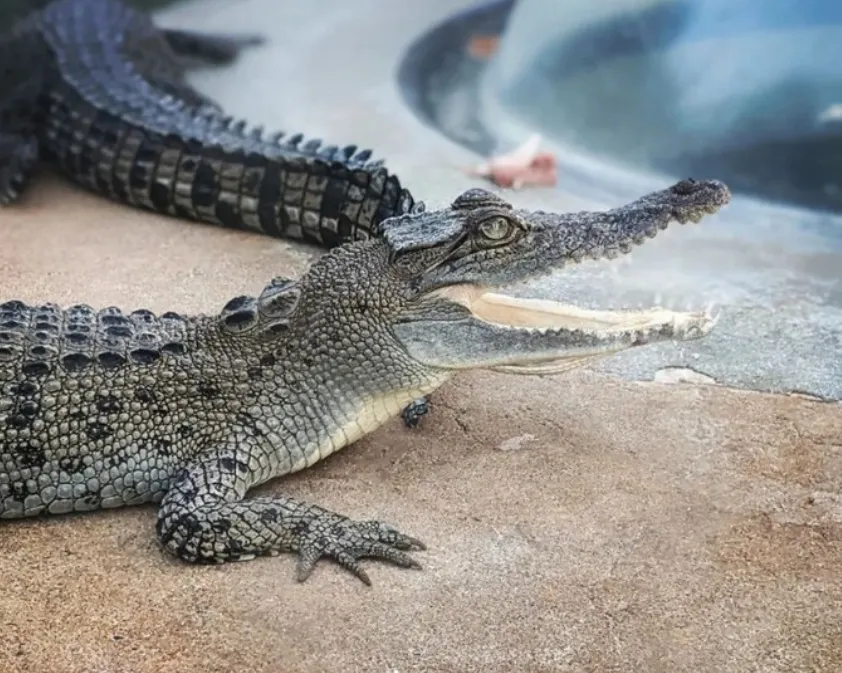
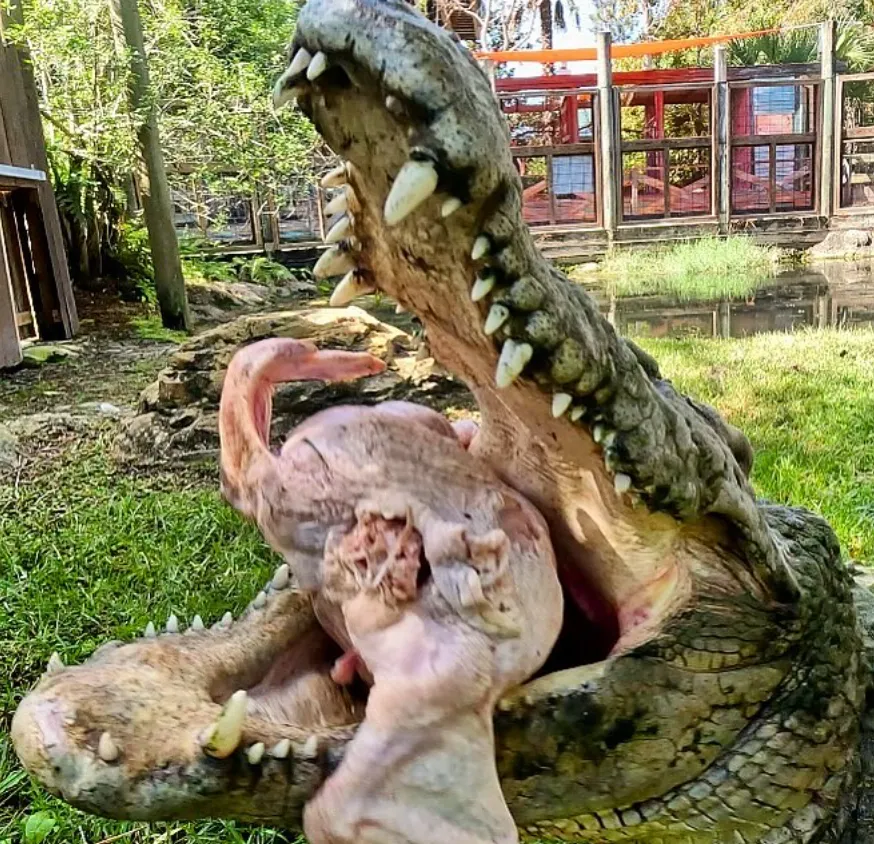
Wet & Dry Season Impacts
Seasonal feeding is crucial to understanding crocodile habits. In the Wet, rivers flood, and prey becomes dispersed. In the Dry, waterholes shrink, and food becomes concentrated.
The Wet Season:
- Abundant prey (fish, birds)
- Easier hunting during floods
- Mating season activity increases
The Dry Season:
- Prey scarcity ups competition
- Crocs become more territorial
- Some may go into energy-saving mode
Their slow metabolism allows crocodiles to survive long periods — even months without food — especially during harsher dry seasons.
The Saltwater Crocodile
Crocodylus porosus, the Australian saltwater crocodile, is the giant crocodile you don’t want to mess with. Adult males tip the scales at up to 1,000 kg and reach over six metres.
- Fish & marine animals: Barramundi, sharks, sea turtles in brackish waters.
- Wild pigs & water buffalo: Larger prey like calves are prime.
- Birds & reptiles: Magpie geese, jabirus, and even other crocodile species during mating season.
- Occasional tinnie: Well, tales abound of upturned boats near river mouths.
Gobi, a female saltwater crocodile caught off Cape York, once stunned researchers by hauling in a 200 kg water buffalo calf. Pounds of pressure in those jaws means no land animal is totally safe.
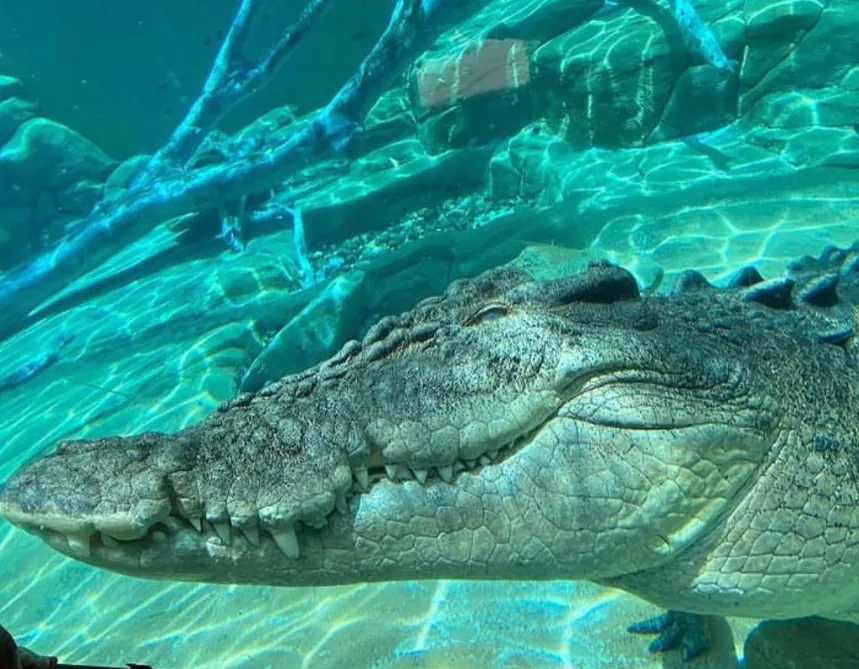
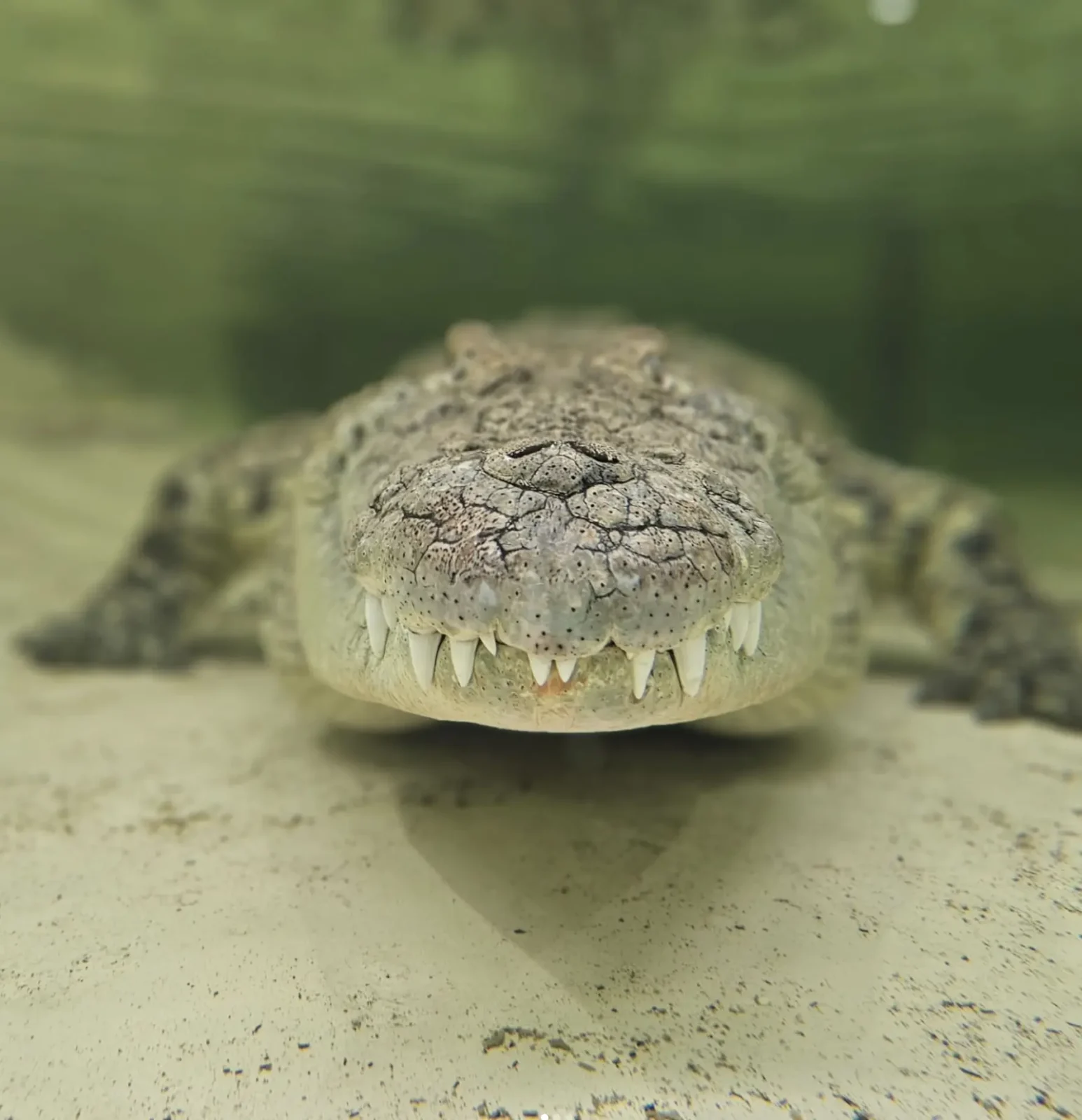
What Do Juvenile & Subadult Crocodiles Eat?
Juveniles graduate to a wider menu:
- Larger fish: Freshwater eel, catfish.
- Small mammals & birds: Possums, water rats, ibis chicks.
- Snakes & amphibians: Carpet pythons, larger frog species.
They’re territorial in freshwater rivers and billabongs, guarding stretches of river against other crocodile types.
What Do Adult Crocodiles Eat?
Adults are apex predators. Their diet covers a wide array of prey:
- Dingos & wild boar: Terrestrial hunting at water edges.
- Wallabies & buffalo calves: Prime land animal meals.
- Wading birds: Egrets, herons, magpie geese.
- Occasional scavenging: Dead animal carcasses.
Saltwater crocs near mangroves even snatch pufferfish and monitor lizards, while freshwater crocs stick closer to rivers, ambushing barramundi and catfish.
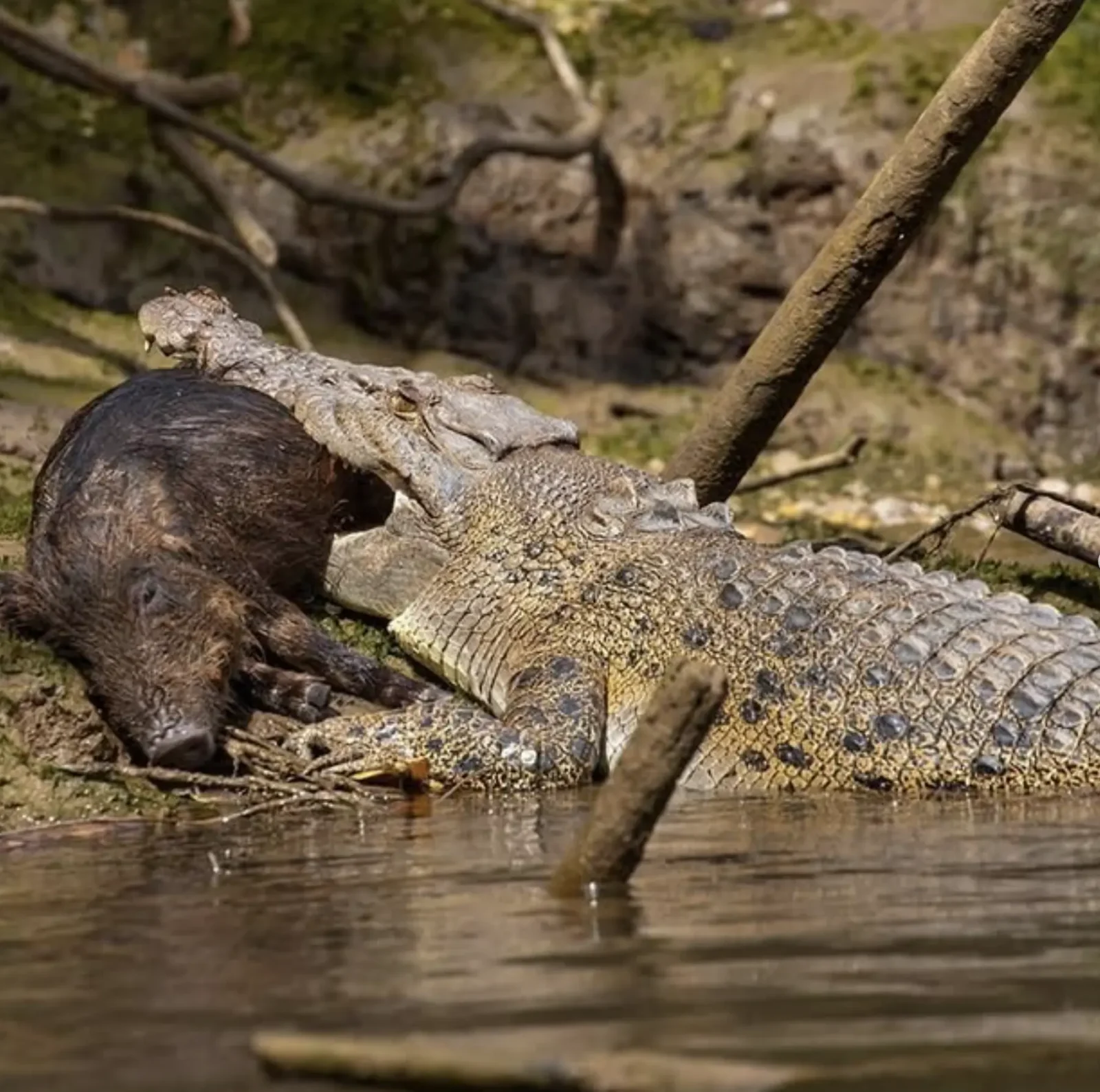
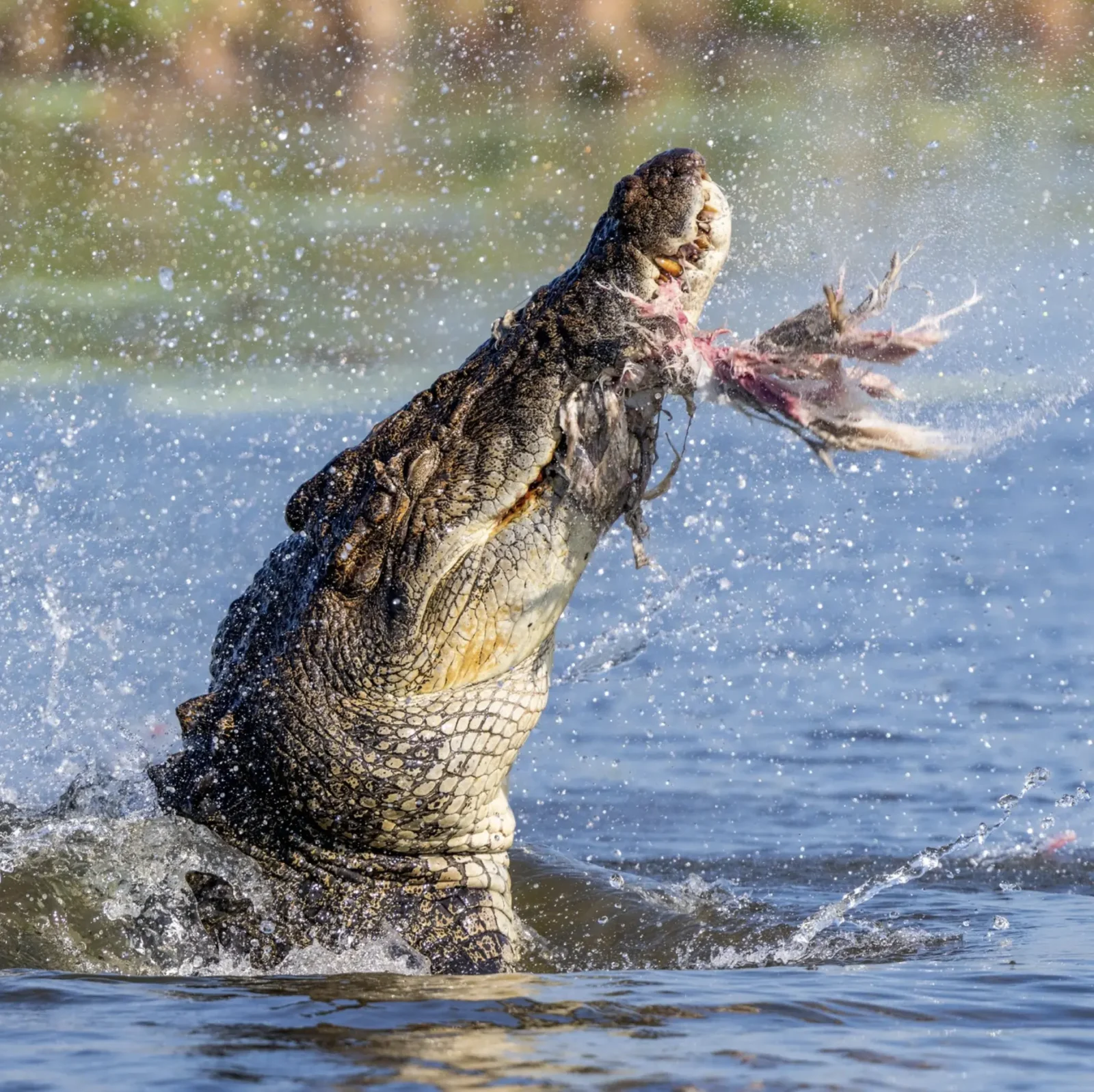
What Do Freshwater Crocodiles Eat?
The Australian freshwater crocodile (Crocodylus johnstoni) is smaller—around three metres max—and shyer.
- Small fish & yabbies: Mainstay in billabongs.
- Frogs & tadpoles: Especially in the build-up to the wet.
- Insects & small mammals: Grasshoppers, mice.
Near Litchfield National Park, I paddled close to pandanus banks only to see a 1.5 m freshie rocket out for a passing goldfish.
Join us for an unforgettable jumping crocodile tour from Darwin and witness the incredible agility and power of these amazing creatures.
How Do Crocodiles Eat Their Prey?
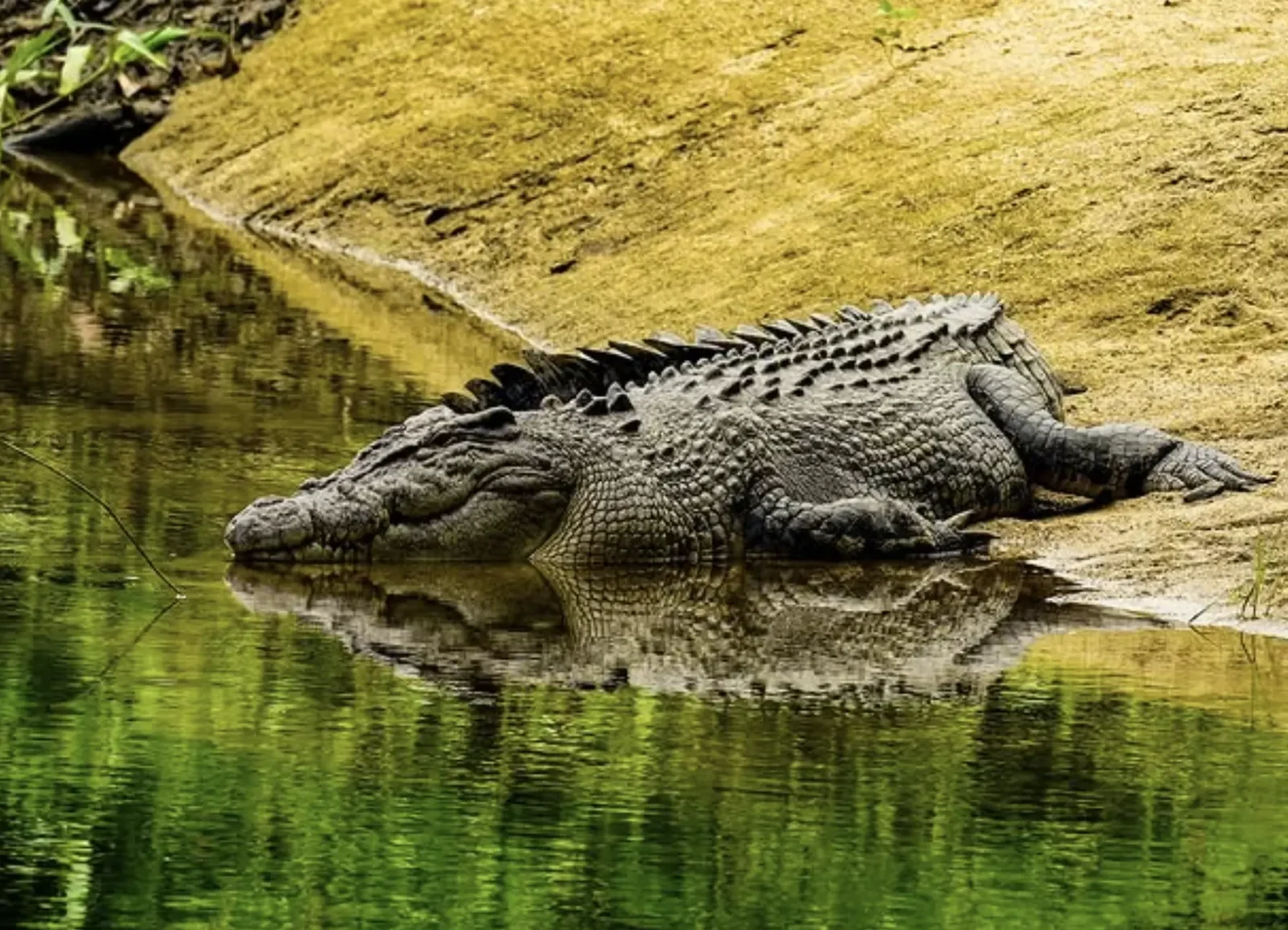
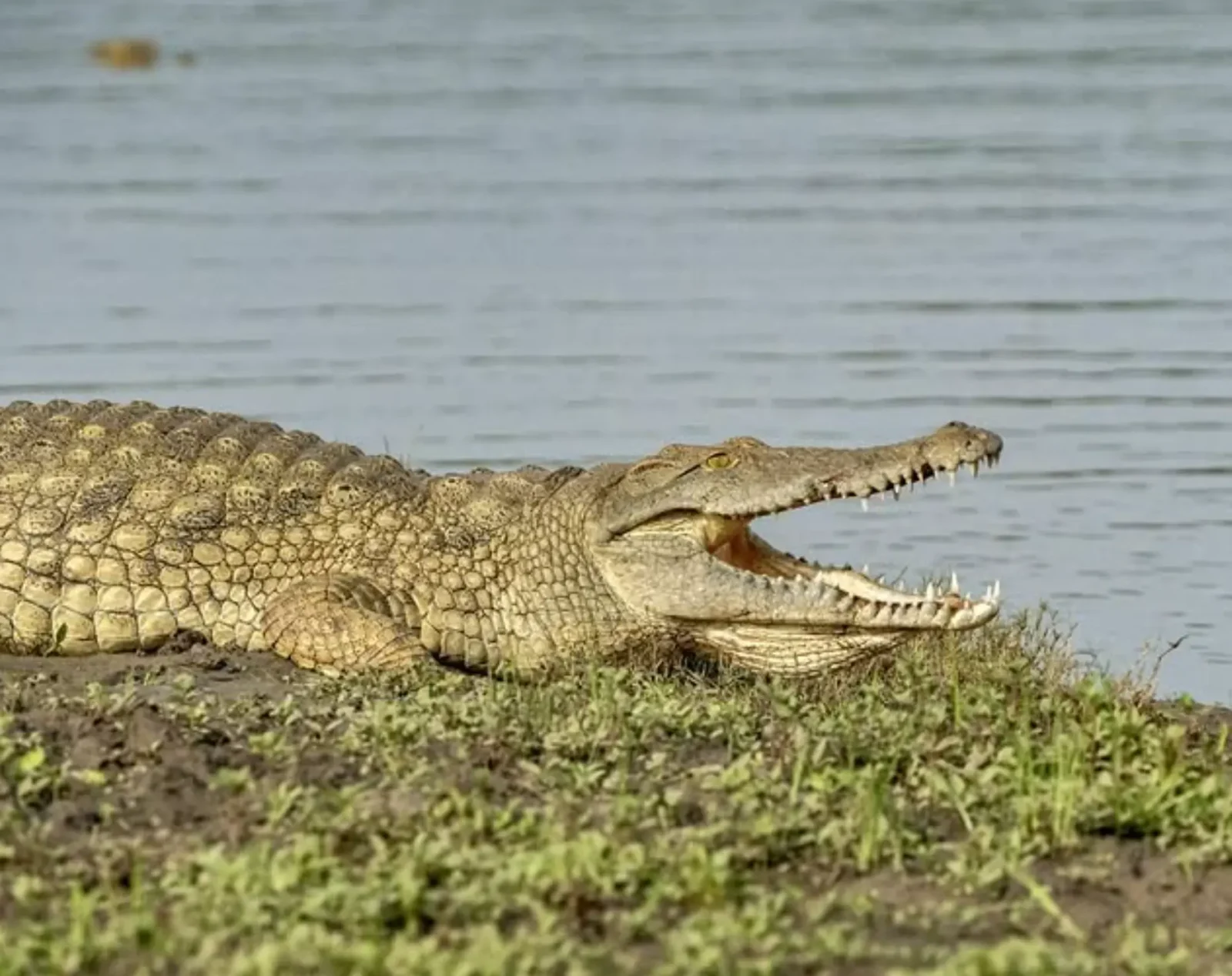
What Crocodiles Eat on Land (Yep, They Can Do That Too)
While crocs are built for water ambushes, adult crocodiles aren’t shy of terrestrial hunting:
- Wallabies at waterholes
- Feral pigs rooting along muddy banks
- Even larger animals like cattle in South Africa’s rivers
In cooler climates, crocodiles might conserve energy, slowing their growth rate and relying on their slow metabolism to go for months without food.
Crocs as Scavengers:
Don’t think crocodiles are above a free feed.
- Dead animals floating downstream?
- Livestock carcasses after floods?
- Fish kills from oxygen-starved billabongs?
All fair game. Wild crocodiles, like their captive crocodile counterparts, are known to scavenge readily. They’re not wasteful—any protein counts toward maintaining that body weight and body size.
Why Do Crocodiles Eat Stones?
- Buoyancy control: Heavier gut for stealth.
- Digestive aid: Grind bone and shell bits.
- Mineral storage: May release minerals over time.
Researchers find stones in over 90% of adult crocodile stomachs—fake tears of a croc’s digestive process, you might say.
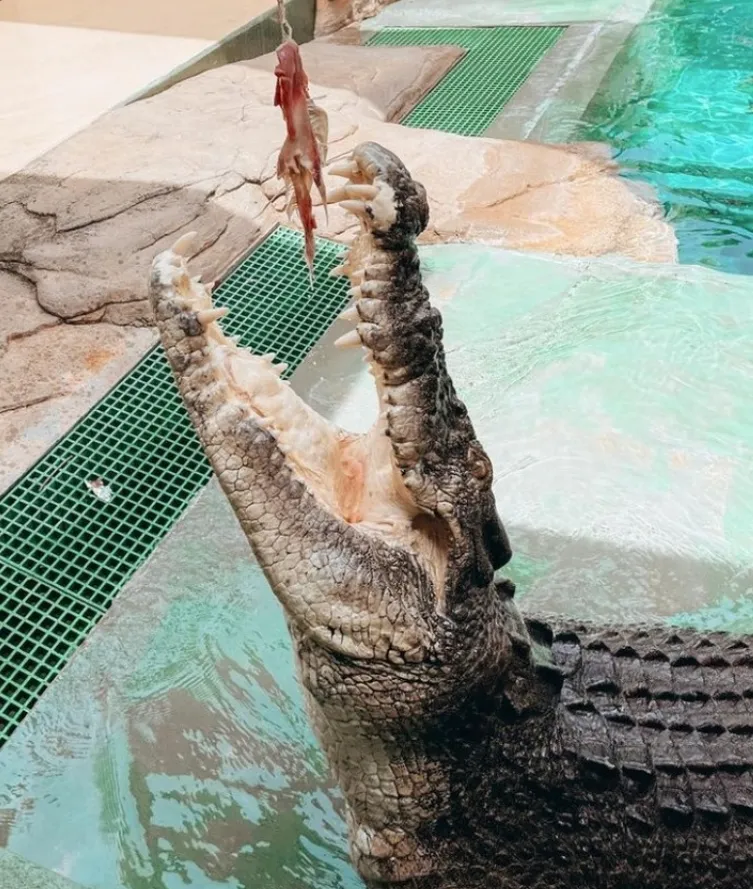
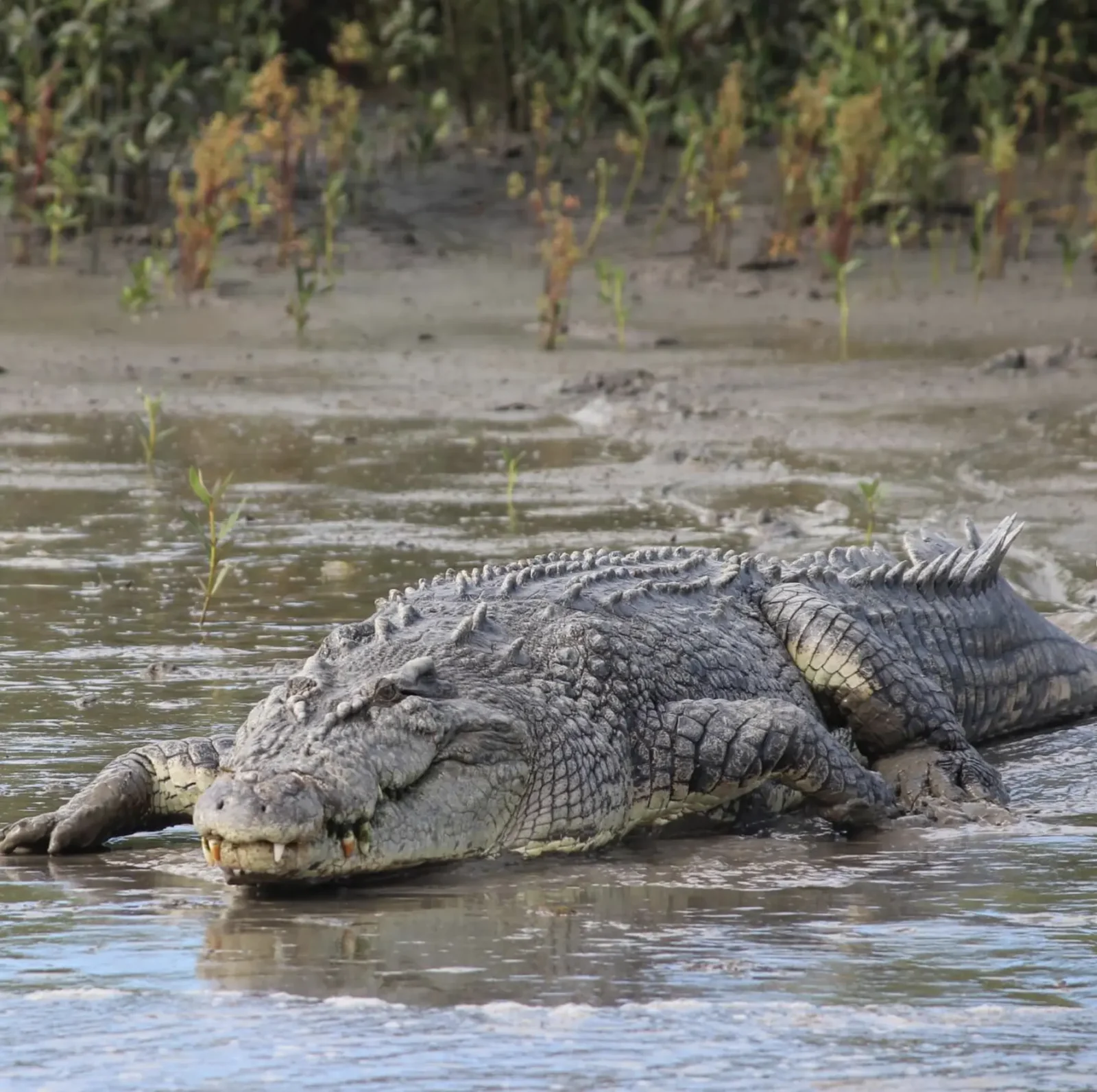
How much do crocodiles eat?
Crocodiles do not eat much, unlike carnivorous mammals (lions, tigers and other large cats). One kilogram of meat daily is enough for them. In cases of severe hunger, some crocodile species can consume up to half of their body weight in a single meal. The amount of food a crocodile consumes depends on its size and availability. A young crocodile should eat at least 4% of its weight weekly. However, this is an approximate estimate, and they may eat more or less than this amount.
When do crocodiles eat?
Crocodiles usually eat when they feel hungry. However, if prey is abundant and crosses their path, they will eat it even if they are not hungry. If there is not enough prey availability, they can survive without food for a long time. Large crocodiles can survive without food for a year.
Crunching Bones & Fake Tears
Thousands of pounds. Their digestive system handles a wide array of prey items.
Fun fact: those so-called crocodile tears aren’t from emotion. They’re just glands working overtime when crocs feed—especially when tearing apart pieces of food with a good ol’ death roll.
Crocodiles in Captivity
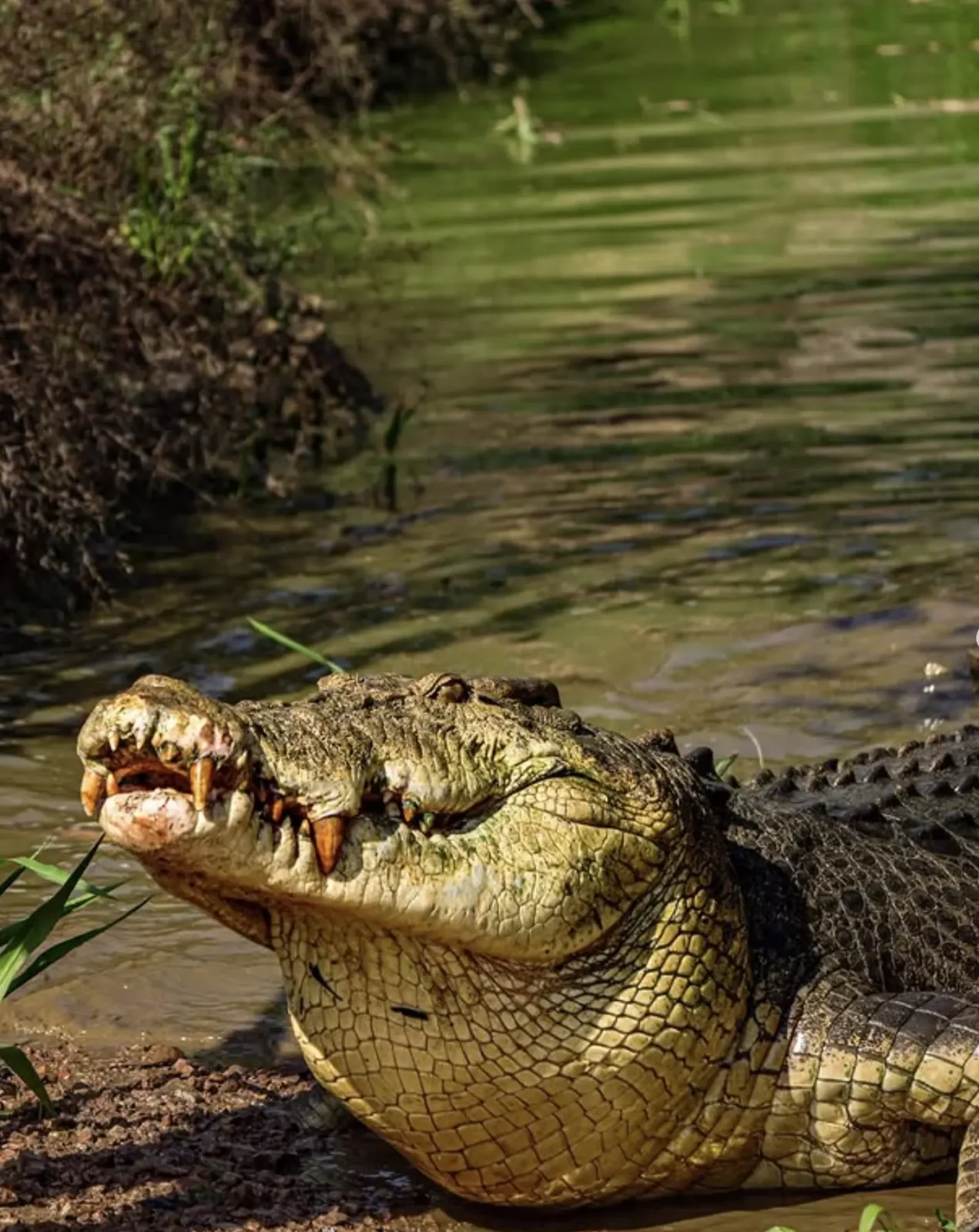
FAQ
What’s a giant crocodile’s favourite food?
How long can crocodiles go without eating?
Do crocodiles really cry crocodile tears?
Are all crocodile species dangerous to humans?
Why do alligators vs. crocodiles matter?
Knowing the difference—broad snout, habitat, and behaviour—helps with species identification and safety in the wild.
Popular Articles

Up in the Northern Territory, crocs are part of the furniture. Call it the price of living in a place where the natural habitat still

What boats do crocodile cruises? If you’ve ever sat in the Top End’s midday heat and heard the words, “Let’s go find some crocs,” you

You’ve heard of Kakadu National Park, right? But here’s the locals’ secret: if you want the most saltwater crocodiles, most birds and pristine wetlands without

Northern Territory crocodiles aren’t just a thrill — they’re part of the cultural fabric, environmental balance and the stories that shape this rugged part of

If you’re looking for top places to see a crocodile in Australia, whether you want to snap crocodile photos of a 5-metre beast basking in

Species of Crocodiles in Australia That’s when you realise — crocodile species in Australia are not to be underestimated. Not all crocs are created equal.

